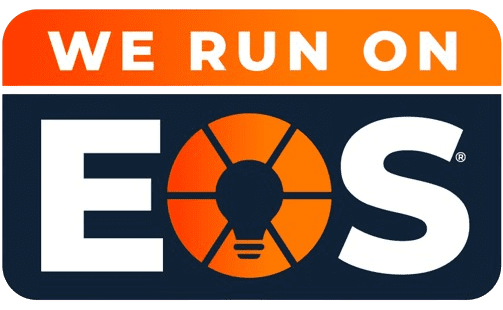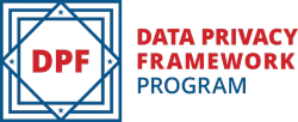This article is the last in a series of blogs our Omnia Team has written about The Employee Lifecycle. I’m honored to wrap up the series with this focus on what employers can do. I often say the employee lifecycle is an equal opportunity and dual ownership experience. The employee owns their part in what they do through each phase, and so does the employer. I’m a big believer that you get what you give. Feel free to queue up The New Radicals while you read this.
I was one of the lucky people who got my dream job in my twenties and stayed with that company for 20 years. The core reason I stayed was because of the way my leadership helped me navigate career advancement opportunities, with growth and development at each phase of the employee lifecycle. When it came time for me to leave it wasn’t easy, but the process was collaborative and supportive. I was fully supported by leadership, because the company and I had honestly achieved all that we could together. It was time for me to leave and spread my wings leading a global sales organization for a different company. And it was time for a new leader to take over the region I’d been directing for many years. It needed new life. In my final weeks, my boss threw me three parties in two different states, the team presented me with a scrapbook, a Tiffany vase and tons of well wishes. No doubt there were mutual tears when I walked out that door, but I was also filled with gratitude for the experiences and lifelong relationships I cultivated, and I felt lifted by the support of the team I was leaving behind. This is how managing the employee lifecycle works on both sides.
The headlines and statistics are shouting at business leaders about why this is so important. More than ever, today we are in an employee’s market. There are more open jobs than before the pandemic, and fewer people in the labor force. According to Manpower’s 2021 Talent Shortage Survey, global talent shortages are at a 15-year high and more than 1 in 3 of U.S. employers report difficulty filling jobs. We know that the reasons for this shortage are complex, with childcare, health and well-being, and competition all playing a role. Now is the time to get creative to attract new workers – and holding onto the workers you have is even more critical. You can accomplish this by keeping a watchful eye and taking strategic action at every phase of your employees’ lifecycle with your company.
There are 6 key phases of the employee lifecycle:
- Attracting
- Recruiting
- Onboarding
- Developing
- Retaining
- Offboarding
Let’s tackle each one by one and consider what key steps employers can take to make sure they’re optimizing employee performance and engagement at each phase.
Attracting: Plenty is being written right now about “the great resignation.” The pandemic has changed the mindset of many who have taken advantage of the pause to reflect and re-consider career options. Many are taking stock and re-evaluating how and where they want to work and live. Given the worker shortage, this really puts employees in the driver’s seat. To attract the kind of employees that best fit your company culture and will keep your business thriving, take a hard look at your existing policies to make sure they are competitive. Companies need to re-evaluate their policies on flexible work schedules, telework policies, office locations, travel requirements, equipment, and home office allowances. Does that 50% travel requirement in the job description still apply? Have you considered offering home office set up allowances?
What’s your brand saying about who you are and what it’s like to work in your organization? Has your website had an update? Is it as attractive to candidates as it is to potential clients? How long has it been since you read your Glassdoor and Google reviews? Would a potential new hire be motivated to apply when they read what former employees say?
Recruiting: The key consideration during the recruiting phase of the employee lifecycle is that this is a two-way street. Both you and your candidates are deciding whether this is a good fit. This is the starting point of the employee experience. Make it a point to proactively manage every interaction and touchpoint throughout this experience, making it smooth for the candidate and giving them a true picture of what your company and culture is like. Some key things to consider:
- How easy is it for the candidate to apply? Nothing’s more frustrating than filling out multiple forms and having the system disconnect multiple times while trying to do so.
- Assessing for job fit? Of course, our team at Omnia recommends companies use assessments to measure cognitive and grammar capability along with job fit. Key to the assessment process is explaining to the candidate how the process works and making it seamless and quick to complete.
- How many steps are there in your hiring process? How many people will the candidate meet with? Make sure the interviews and discussions are mutually valuable. Arrange for the candidate to meet and ask questions of those they would be working most closely with and are doing the job today. This also gives you good insight from a coworker’s perspective about potential fit.
- What kind of impression are you leaving on the candidate about your company? Throughout the recruiting process, it’s critical to keep your candidates updated. Proactively communicate at each touchpoint: sending acknowledgement and appreciation from the moment their application is submitted to keeping them informed all the way through the process about where they stand and what to expect next. I’ve heard from colleagues going through the interview process how grueling it is when they don’t hear anything for weeks. One recently told me they were completely ghosted by the hiring manager for 6 weeks! That doesn’t send a great signal about how supportive that person would be as a leader.
Onboarding: According to research from Glassdoor, organizations with a strong onboarding process improve new hire retention by 82% and productivity by over 70%. Here are some key things employers can do to make a difference during the onboarding process.
- Make a big deal of the first day! If remote, send the new employee a welcome basket. If in the office, arrange for people to stop by and say hello, walk the employee around the office, and set up lunch with their new colleagues. The ending is as important as the beginning of the day. Make sure someone (ideally their manager) stops by or calls and asks about their first day. These little touches make such a difference. I’ve heard horror stories about people starting their job and not even having a chair at the desk, or not seeing their manager at all during the first week. Talk about horrible first impressions.
- Set your new hire up with an onboarding buddy. This is their go-to person throughout their onboarding process. They should have weekly check ins and freedom to ask this person anything without judgement. Ideally this relationship has been in place for at least six months and with the right match will go on indefinitely.
- Create and follow a schedule of activities that includes on-the-job training, job shadowing and company culture activities. Allow the new hire plenty of time to get to know their coworkers and company norms. If working remotely, be mindful of break times for the new hires as well. You don’t want to overschedule them so much that they don’t get a chance to process what they’ve learned. Incorporate engaging and independent activities such as doing a scavenger hunt on your company intranet, or taking quizzes on the company’s history, product, and client statistics.
Retaining: This is when things start to get interesting and challenging. You think you’re there once your people are hired and onboarded. Sadly, 46% of new hires fail in the first 18 months. Mostly this is due to poor culture fit (89%). One of the most critical things employers can do at this time is to monitor performance closely to make sure employees are productive and engaged. Especially in times when we aren’t working in the office together.
Establish ways to monitor performance through your customer relationship (CRM) system. Employees should have individual goals and metrics that are easily tracked for recognition and performance development.
Mentoring is another retention enabler. Set up a program where individuals outside of direct supervisors take a personal interest in your employee’s individual success and engagement. These can be formal mentoring relationships or informal. The key is making sure that someone else outside of an individual’s direct supervisor is taking an active interest in their on-going development and success.
On-going communication is also critical. We recommend regular check-in’s that are conducted by the direct supervisor where there’s time to review performance and discuss development goals, as well as more personalized discussions and two-way feedback. Constantly asking your employees how they’re doing and what the organization can do to support them is critical here. Also, consider using skip-level interviews. Have someone in senior leadership take time to check in with the same employees regularly. This sends a strong signal that the organization is committed to the individual’s success. It also helps leadership gain insight to spot trends or issues that are impacting the team’s culture by function or leader.
Longer term, as employees continue to grow and perform within your organization, consider conducting “stay interviews.” Create a system for gathering on-going feedback from your most tenured employees about why they continue to stay. This is another way to show your tenured teammates that you value them, and their insight can be incredibly valuable to incorporate across your firm where you may have functions with higher retention than others. One other benefit of collecting this input is to create testimonials and messaging to use in the attracting phase of your employee lifecycle. Knowing what keeps people engaged helps you with greater insight into what the employees on your team value in terms of work environment, leadership, and support systems.
Developing: On-going development is another critical phase of the employee lifecycle. People want opportunities to grow and advance in their careers. They will take calls from recruiters or search for new challenges to overcome boredom and complacency. Beyond the relationship with their manager, and pay, lack of career advancement and development is the next top reason people leave. The good news is there are many inexpensive ways to develop your employees while also growing your business. Look beyond current job roles and create a culture of cross-company mobility. Recognize and incentivize your supervisors to encourage cross-functional growth. A manager who hoards – keeping their best performers from moving outside of their team – is a detriment to your bottom line.
Another key factor in developing your team is to understand their personal motivations, strengths, and challenges. This is where assessments come in again. Assessments provide key insights into a person’s natural traits and propensity that can help you identify emerging leadership qualities, or even sales and client service attributes you may not notice at a surface level. Omnia can help with this if you’d like to know more.
Offboarding: The final phase of the employee lifecycle is critical for the individual and everyone they worked with. How a person leaves, and how others observe their exit sends a strong signal about your culture and leadership. I’m sure we’ve all heard the adage about not burning bridges. That goes both ways – for the individual and the company. Here are some key considerations for the offboarding – and these apply whether it’s a voluntary departure, a retirement, or a business decision that leadership made.
Communicate swiftly and transparently. News travels fast. Once an exit has been planned, communicate broadly to all clients and colleagues. Be as transparent as possible. It’s human nature to consider the worst such as — did he get laid off? Am I next? Is the company in trouble; should I start looking? And the swirl goes downward from there.
Honor the person’s contributions and give an appropriate send-off. In all communications, openly share and honor the individual – what they contributed, how they made a difference, and wish them well in their next endeavor. If appropriate, for more tenured employees, consider a celebration, gifts, and mementos to send them on their way. This not only celebrates the individual and leaves them feeling positive, but it also allows everyone who worked with them who might be feeling a loss to have a way to productively contribute and process their emotions around the departure as well.
One of my former employers has a “colleague for life” mentality that I will forever treasure. I’m still a part of their alumni network, receiving regular updates, resources, and networking opportunities. They embrace the concept that we are all connected and can continue to provide value within the industry and business community no matter where we are. I’d encourage every company to embrace that idea.
The employee lifecycle is a concept I’ve been personally interested in and invested in for most of my career. There are a plethora of programs, resources, and communities available to support organizations at each phase of this lifecycle. I’d love to connect and get your perspective on ideas for optimizing each phase – whether you’re an employee or an employer. Because after all, both the employee and the employer are responsible for their part in getting the most out of each phase. We’re all in this together. We hope you’ve enjoyed this series.
Speak to the Author!
Have an article-specific question or want to continue the conversation? Now you can! Contact the author directly through the short form below and Keather Snyder will respond to your query. If you have a more general question please use our chat function, call 800.525.7117, or visit our contact us page and we’ll have a subject matter expert answer your questions.























